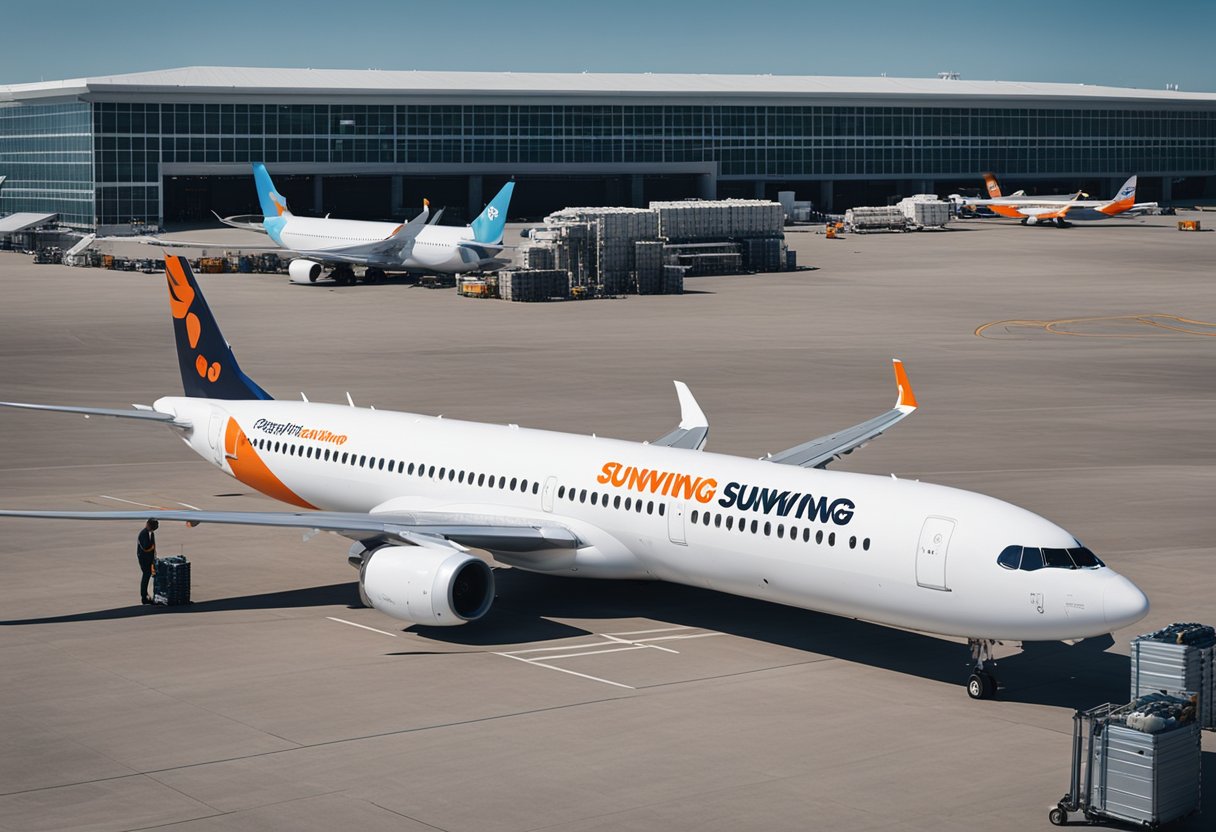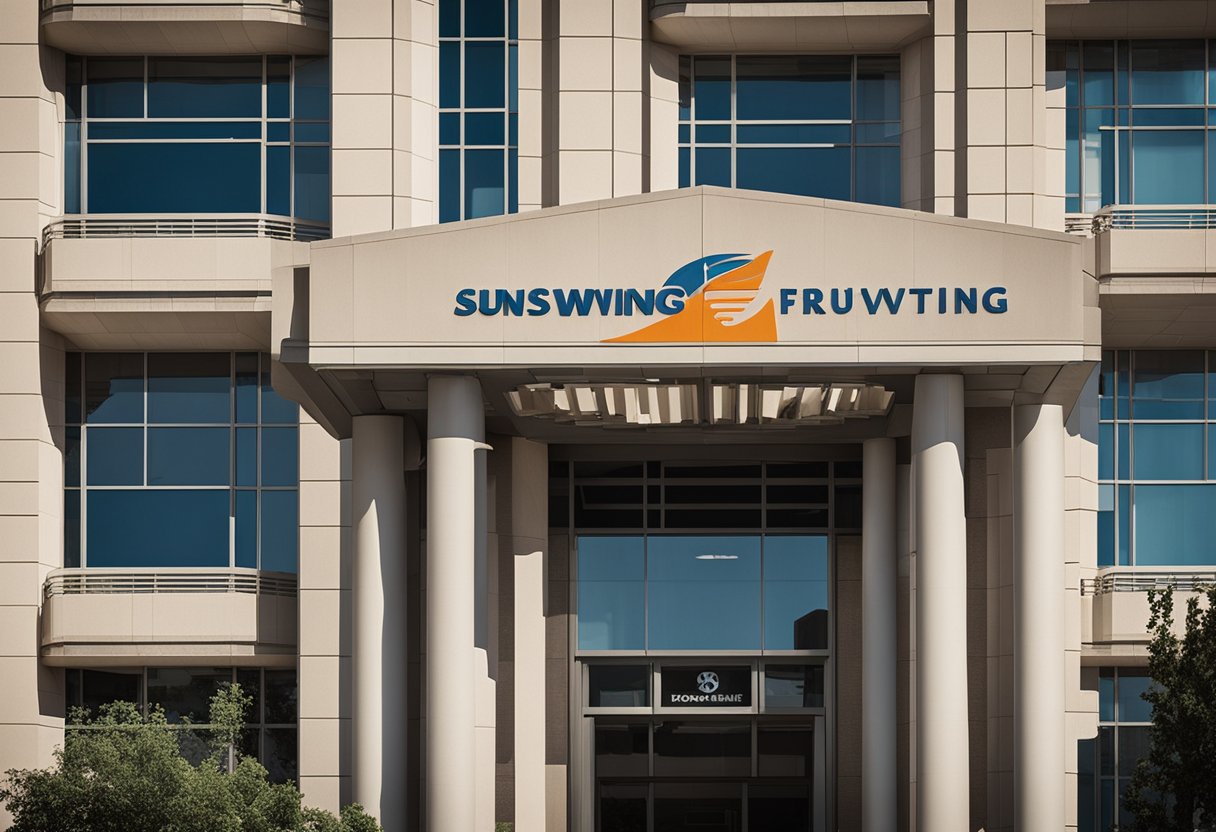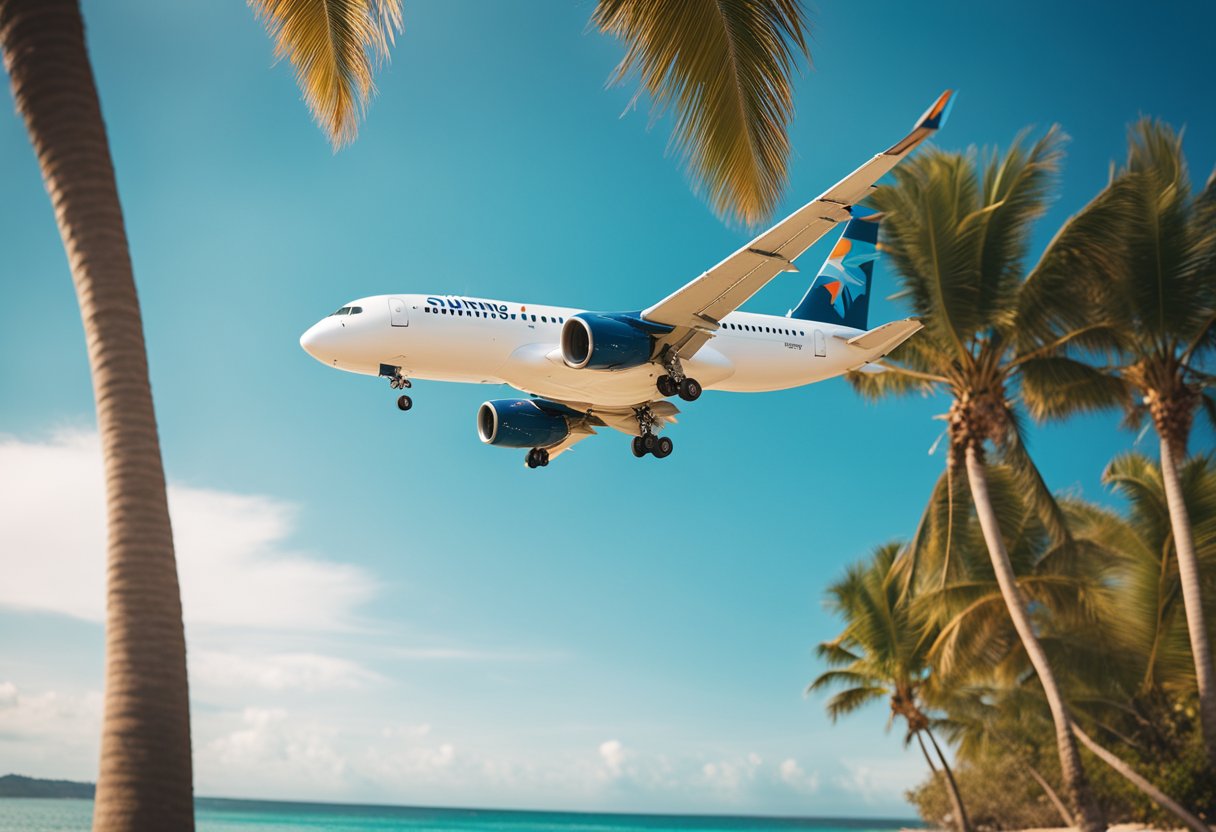If you’ve booked a vacation with Sunwing Airlines in Canada, you might wonder who’s behind this popular leisure airline. In May 2023, Sunwing Airlines became a subsidiary of the WestJet Group, which completed its acquisition of both Sunwing Airlines and Sunwing Vacations. The previously independent Sunwing is now officially owned by WestJet, and plans are in place for the two airlines to merge completely in 2025.

This change represents a significant shift in Canada’s travel industry, bringing together two major players. Before the acquisition, Sunwing was part of the Sunwing Travel Group, which has since been renamed to Sunwing Vacations Group and operates as the vacation division of the WestJet Group. Travelers who have enjoyed Sunwing’s vacation packages and flights to sunny destinations may notice changes as this merger progresses.
Key Takeaways
- WestJet Group acquired Sunwing Airlines and Sunwing Vacations in May 2023.
- The two airlines are scheduled to complete their merger in 2025.
- Sunwing now operates as part of the WestJet Group’s vacation division under the name Sunwing Vacations Group.
Background of Sunwing

Sunwing has evolved from a family business into one of Canada’s leading vacation companies, focusing on providing affordable leisure travel experiences to popular destinations.
Founding and Growth
Sunwing was established in 2002 as a family business. The company was founded by Colin Hunter, who was born in Bombay (now Mumbai), India in 1939. From its humble beginnings, Sunwing has grown substantially over the years. It expanded its operations to become one of Canada’s prominent vacation providers. The company now offers the widest variety of all-inclusive vacation packages to destinations across the Caribbean, Mexico, and Central America.
Sunwing’s growth led to the development of two main divisions: Sunwing Airlines and Sunwing Vacations, which work together to provide integrated travel services.
Mission and Travel Philosophy
Sunwing’s mission centers on making vacation dreams accessible to Canadians. They focus on creating affordable vacation packages that don’t compromise on quality or experience. The company has built its reputation on offering convenient travel solutions. Sunwing provides direct flights from various Canadian cities to popular sunny destinations.
Their travel philosophy emphasizes hassle-free vacations. They aim to simplify the travel process from booking to return, allowing travelers to focus on enjoying their time away.
Since 2023, Sunwing has been a subsidiary of WestJet, and the companies will be merged in 2025. This merger is expected to strengthen their position in the Canadian leisure travel market.
Ownership and Management
Sunwing’s ownership structure has evolved significantly over time, with several major corporate players taking stakes in the Canadian vacation provider. The company has undergone notable changes in recent years that have reshaped its business operations and management approach.
Initial Ownership Structure
Sunwing was originally established as a family business, with the Hunter family holding majority ownership of Sunwing Travel Group. This Canadian company started as a modest operation but grew to become one of the country’s leading vacation providers. The Hunter family maintained significant control of the company throughout its early growth phase, guiding its expansion into various travel sectors including airlines, tour operations, and resort management.
As the company expanded, it maintained its Canadian roots while developing partnerships with international travel organizations to strengthen its market position and service offerings.
Management Team Overview
Sunwing’s executive leadership team has guided the company through significant transitions while maintaining its focus on leisure travel experiences. The management structure includes executives with extensive experience in the airline and vacation industries. The leadership team has been responsible for navigating competitive challenges in the North American travel market and implementing strategic partnerships with international travel groups.
Key executives have overseen Sunwing’s growth into what its corporate materials describe as “the largest vacations brand in North America”, though this claim likely refers to its position within specific market segments.
Role of TUI Group
TUI Group, a multinational travel and tourism company headquartered in Germany, played a significant role in Sunwing’s history. The European travel giant formed a strategic partnership with Sunwing that helped expand its reach in North America. This relationship gave TUI Group a foothold in the Canadian vacation market while providing Sunwing with access to TUI’s extensive global resources and expertise.
The partnership allowed both companies to leverage their respective strengths – TUI’s global scale and Sunwing’s local market knowledge – to enhance their competitive positions in the international travel industry.
Onex Corp’s Involvement
Onex Corporation, a Toronto-based private equity firm, became indirectly involved with Sunwing through its acquisition of WestJet. Onex purchased WestJet Airlines in 2019, making it a privately-held company. This connection became more significant when WestJet Group completed its acquisition of Sunwing Airlines and its associated tour operator. This acquisition brought Sunwing under the broader WestJet umbrella.
Following the acquisition, Sunwing now operates as the leisure division of the WestJet Group. The integration plans have been substantial, with reports indicating that WestJet plans to shut down Sunwing and merge it with its main business within two years of the acquisition.
Sunwing’s Market Position
Sunwing has established itself as a significant player in Canada’s leisure travel market, offering vacation packages and airline services to popular sun destinations. The company has been acquired by WestJet Group, changing its competitive standing in the Canadian travel industry.
Comparison with Other Airlines
Sunwing Airlines has positioned itself differently from major carriers like Air Canada by focusing exclusively on leisure travel to sunny destinations. Unlike Air Canada’s broad service model, Sunwing built its business around packaged vacations.
WestJet, now Sunwing’s parent company, previously competed directly with Sunwing but operated a more diverse business model with both domestic and international routes. The acquisition completed in 2023 has changed this competitive landscape.
Transat (Air Transat) remains one of Sunwing’s primary competitors in the leisure travel segment, with a similar focus on vacation packages to sunny destinations.
Sunwing’s integration with vacation providers like SellOffVacations and Vacation Express gave it a unique edge, allowing seamless vacation packages that bundled flights with resorts.
Market Share and Leisure Segment
In Canada’s leisure travel market, Sunwing has been a major force, especially for travel to Caribbean and Mexican destinations. Before the WestJet acquisition, Sunwing held significant market share in the sun destination segment.
The WestJet-Sunwing merger created a stronger competitor to Air Canada and Transat in the leisure segment. Together, they now offer more destination options for Canadians seeking vacation packages.
Sunwing Vacations has been particularly strong in Eastern Canada, while WestJet had stronger presence in Western Canada. Their combined reach gives them nationwide coverage.
The leisure market has faced challenges including pandemic disruptions and increasing competition. However, Canadians’ demand for sun destinations has remained strong, helping Sunwing maintain its position despite industry pressures.
Acquisition Overview

The travel industry saw a significant change when the WestJet Group completed its acquisition of Sunwing Vacations and Sunwing Airlines. This deal reshaped Canada’s vacation travel market and brought together two well-known brands.
Timeline of Events
WestJet first announced its plans to acquire Sunwing on March 2, 2022. This was the beginning of a long process that would take over a year to complete.
The deal then moved into the regulatory review stage where Transport Canada and other government agencies examined the potential impacts. This phase was crucial to ensure the merger wouldn’t harm competition.
After careful consideration, the Canadian government approved the acquisition, giving WestJet the green light to move forward with their plans.
The acquisition was finally completed in 2023, marking the end of Sunwing’s status as an independent company and the beginning of its new chapter under WestJet’s ownership.
Reasons for the Takeover
The acquisition came at a time when demand for travel was rebounding after the pandemic challenges. WestJet saw an opportunity to strengthen its position in the leisure travel market.
By acquiring Sunwing, WestJet gained access to valuable vacation destinations, especially in the Caribbean and Mexico. This move helped them expand their vacation offerings significantly.
The deal also allowed WestJet to better compete with Air Canada Vacations in the packaged holiday market. Combining resources meant they could offer more competitive pricing and options.
For Sunwing, joining forces with a larger airline provided financial stability and resources for future growth during a period of industry uncertainty.
Impact on Sunwing and WestJet
The merger meant that Sunwing’s network of scheduled and charter flights would be taken over by WestJet. This integration created a more extensive route network for both brands.
Customers now have access to more vacation packages and flight options. The combined entity can offer more frequent departures to popular destinations.
For employees, the merger brought both opportunities and challenges. While some positions were consolidated, the larger company also created new roles and career paths.
WestJet added Sunwing’s fleet of Boeing 737s to its operations, expanding its capacity and ability to serve more routes efficiently.
Responses from the Market and Regulators
Transport Canada set several conditions for approving the deal. These were designed to protect consumers and maintain healthy competition in the Canadian travel market.
Travel agents and tour operators expressed mixed feelings about the acquisition. Some worried about reduced competition, while others saw potential benefits in a stronger combined entity.
Consumer groups watched the merger closely for any signs of price increases or service reductions. The government promised to monitor the situation to ensure Canadians still had access to affordable vacation options.
Industry analysts generally viewed the acquisition as positive for WestJet’s business strategy. It positioned the WestJet Group as a more complete travel provider with both airline and vacation package capabilities under one corporate umbrella.
Effects on Customers and Services
The WestJet acquisition of Sunwing has created significant changes for travelers and vacation offerings. Customer experiences and service options are evolving as the two companies merge their operations.
Changes in Vacation Packages
Sunwing Vacations will fully integrate with WestJet on May 29, 2025, marking a major shift in vacation packages.
All flights will operate under the WestJet brand, which means customers who previously booked with Sunwing will see different branding and possibly new booking systems.
Vacation packages to popular sun destinations like the Caribbean and Mexico may see adjustments in pricing and bundling options.
WestJet Vacations might incorporate Sunwing’s all-inclusive specialties while standardizing offerings across both brands.
Some favorite Sunwing resort partnerships may continue, while others might change as WestJet evaluates which relationships to maintain. The combined company will likely offer a wider selection of destinations, though some route consolidation is expected.
Implications for Canadian Travelers
Canadian travelers could face mixed outcomes from this merger. The Competition Bureau reported that the acquisition might result in higher prices, fewer choices, and potentially decreased service quality for Canadians.
Travelers in smaller markets might be particularly affected, as route optimization could lead to reduced service to some communities. Previously, Sunwing offered seasonal flights from many smaller Canadian cities to sunny destinations.
On the positive side, WestJet’s larger network might provide more connection options and potentially year-round service to destinations that were previously seasonal with Sunwing.
The integration could also bring benefits like:
- Unified loyalty programs
- Streamlined booking processes
- More consistent in-flight experiences
- Greater flight frequency to popular destinations
Customer service processes will need careful attention during the transition to maintain timely responses and avoid delays that can negatively impact traveler experiences.
Economic and Industry Considerations

The travel industry has undergone significant changes in recent years, with major acquisitions like WestJet’s purchase of Sunwing reshaping the competitive landscape. These changes occur against a backdrop of evolving consumer preferences and market pressures.
Post-Pandemic Recovery
The pandemic hit travel companies hard, with Sunwing facing particular challenges before being acquired by WestJet Group. As borders closed and planes were grounded, vacation companies saw revenues plummet to unprecedented levels.
Recovery has been uneven across the industry. Larger companies with deeper pockets have weathered the storm better than smaller operators. Sunwing’s integration into WestJet represents a consolidation trend that’s becoming common as companies seek financial stability.
For Canadians, this recovery phase has meant changing prices and service options. Many travelers saw their pre-pandemic bookings canceled or postponed, creating pent-up demand that has helped fuel the comeback of leisure travel companies like Sunwing.
Leisure Travel Trends
Canadian travelers are showing strong interest in vacation packages again, especially all-inclusive resorts in sunny destinations. This plays to the historical strengths of Sunwing’s business model.
Beach destinations remain popular, with Mexico and Caribbean locations topping the list for many leisure travelers. The Sunwing Vacations Group, now under WestJet’s ownership, continues to focus on these markets.
Package deals that combine flights, accommodations, and amenities are seeing renewed popularity. Travelers appreciate the simplicity and cost predictability, especially in times of economic uncertainty.
Seasonal travel patterns have also shifted somewhat, with more flexible work arrangements allowing for longer trips and different timing than the traditional winter getaway schedule.
Tour Operators’ Role in the Market
Tour operators like Sunwing play a crucial role in the travel ecosystem by bundling services and creating convenient options for consumers. They negotiate bulk rates with hotels and airlines, often passing savings to customers.
The Canadian government’s approval of the WestJet-Sunwing deal came with conditions designed to maintain competition in the market. These conditions help ensure Canadians continue to have choices when booking vacations.
Technology has transformed how tour operators conduct business. Mobile apps, personalized recommendations, and seamless booking experiences have become expected features rather than luxuries.
Competition remains fierce in this sector, with companies like Air Canada Vacations and Transat also vying for Canadian leisure travelers’ business. This benefits consumers through competitive pricing and service innovations.
Government and Regulatory Impact

The acquisition of Sunwing by WestJet involved significant government oversight and regulatory considerations. The Canadian government played a key role in reviewing and approving this important change in the country’s airline industry.
Transport Canada’s Oversight
Transport Canada closely examined the WestJet-Sunwing merger before making their decision. On March 10, 2023, they officially approved WestJet’s acquisition of Sunwing Vacations and Sunwing Airlines.
This approval didn’t come without conditions. The government included strict terms to protect Canadian travelers and airline workers. These conditions likely addressed concerns about market competition and service quality.
Transport Canada’s review process was thorough, ensuring the deal wouldn’t negatively impact Canadian air travel options. The ministry evaluated how this merger might affect routes, especially to popular vacation destinations served by both airlines.
The regulatory review began in March 2022 when WestJet announced its intent to acquire Sunwing. The process took approximately one year to complete.
Government Investments and Subsidies
The Canadian government has historically supported its airline industry through various measures, especially during challenging times. This support became particularly relevant during the WestJet-Sunwing deal discussions.
Before the acquisition, Sunwing had received government assistance during the pandemic to help maintain operations. These subsidies aimed to preserve jobs and ensure Canadians still had travel options during the recovery period.
WestJet’s acquisition of Sunwing created new considerations about how government support might continue or change. The merger potentially affected how future subsidies might be distributed in Canada’s airline sector.
The acquisition also positioned the combined company differently against competitors like Air Transat. This shift in market dynamics likely influenced government perspectives on industry support and investment strategies.
The merger created a stronger competitor to government-supported Air Canada, potentially reducing the need for intervention in certain markets.
Future Outlook

The future of Sunwing looks significantly different as the WestJet Group integration moves forward, with major changes planned for operations, fleet management, and customer experience. These developments will reshape how Canadian travelers access vacation destinations in the Caribbean and Mexico.
Industry Forecasts
The Canadian airline industry is seeing major consolidation with WestJet’s acquisition of Sunwing creating a stronger vacation travel competitor. This merger will impact how Canadians travel to warm-weather destinations.
WestJet has announced plans to shut down Sunwing Airlines and incorporate its fleet into WestJet’s mainline operations. This move aims to streamline operations and reduce costs.
The full integration has been delayed until 2025, giving travelers more time with the familiar Sunwing brand before changes take effect. Market analysts expect this consolidation to potentially reduce competition on some routes to Mexico and the Caribbean.
Toronto-based operations will likely see significant restructuring as WestJet (headquartered in Calgary) aligns the two businesses. Industry experts predict more package vacation options but possibly at higher price points.
Innovation and Fleet Expansion
WestJet will absorb Sunwing’s 18 Boeing 737 aircraft into its existing fleet, creating a more unified and efficient operation. This will help WestJet expand its presence in leisure travel markets.
Technology improvements are expected as WestJet modernizes Sunwing’s booking systems and digital customer experience. Travelers should anticipate a more seamless booking process for vacation packages.
The combined company will likely invest in newer aircraft with better fuel efficiency and comfort features. This could mean improved in-flight experiences for travelers heading to Mexican and Caribbean destinations.
WestJet may introduce new routes or increase frequency on popular Sunwing destinations. Popular vacation spots like Cancun, Punta Cana, and other Caribbean destinations will remain key focus areas.
Customer Loyalty and Brand Strategy
The future of Sunwing’s loyalty program is uncertain. It may integrate into WestJet’s Rewards program. Customers should watch for announcements about points transfers or program mergers.
WestJet will likely maintain some aspects of the well-known Sunwing vacation experience. The friendly service and vacation package expertise may continue under the WestJet umbrella.
Vacation package offerings could expand with more options and flexibility for travelers. Families heading to all-inclusive resorts in Mexico and the Caribbean might see new hotel partnerships.
Marketing strategies will evolve as WestJet decides how much of the Sunwing brand identity to preserve. The colorful, vacation-focused marketing approach might blend with WestJet’s more corporate image.
Customer service teams from both Toronto and Calgary will likely merge. This will create a unified approach to handling bookings and travel issues.




